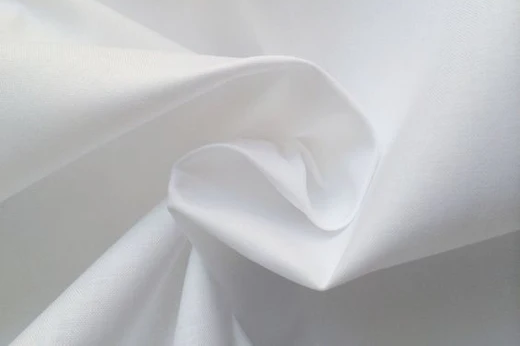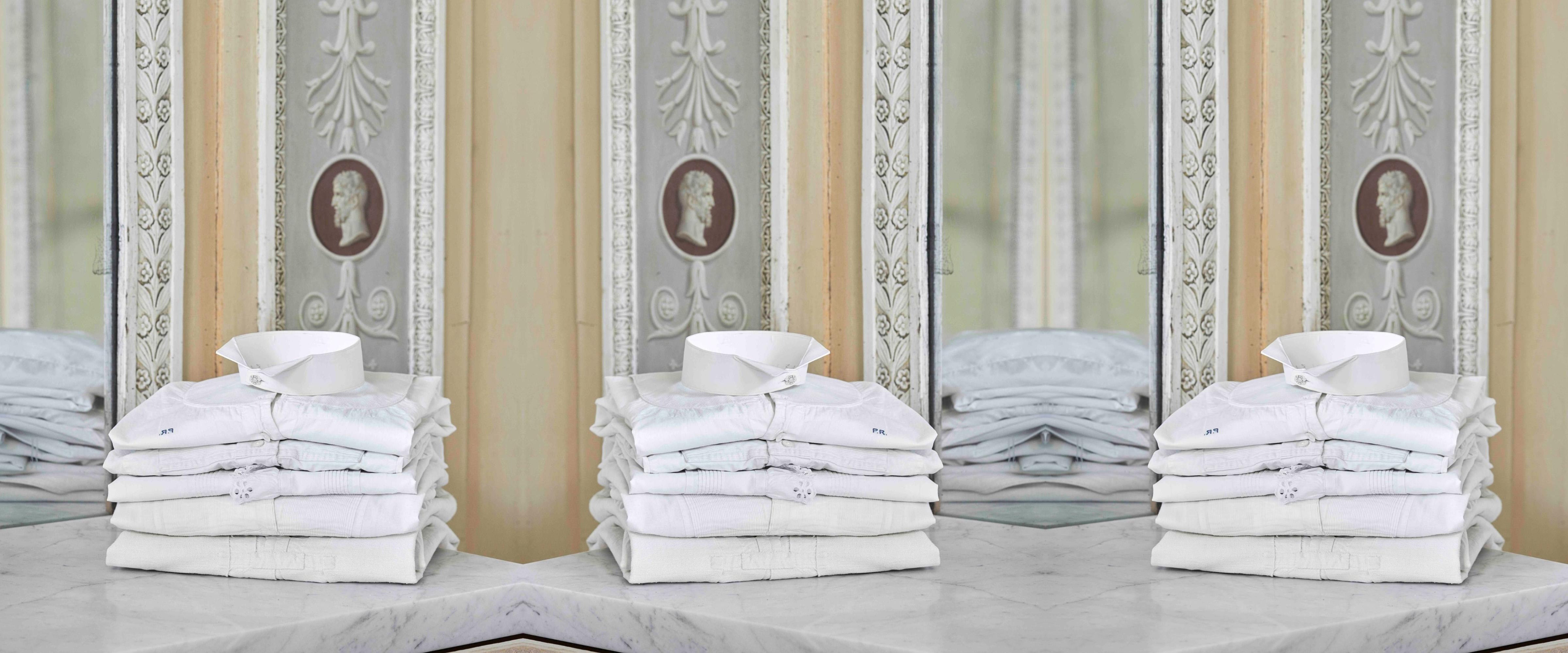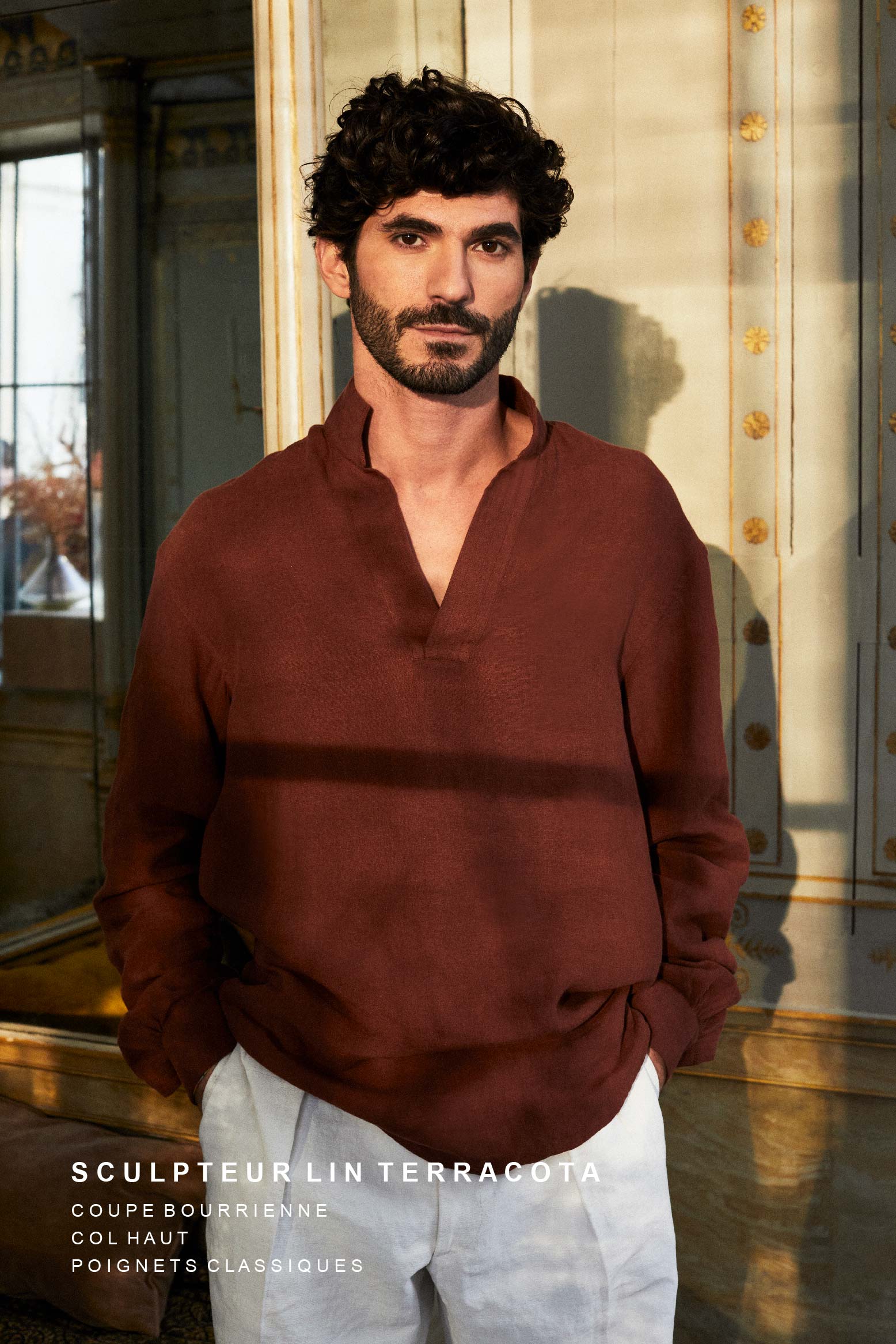
Materials and fabrics at Bourrienne Paris X
How can we talk about our shirts without talking about our fabrics? Each of our shirts is a concentrate of know-how but also of knowledge of materials and fabrics. For a mono-product, monochrome brand like ours, differentiating the models can be complex at first glance. Yet each model stands out in many ways, including the fabrics that shape them. Beyond the signature details that adorn our shirts, we pay a lot of attention to the materials used in the composition of our white shirts. Depending on the fabric the shirt is cut from, the fit, feel and overall aesthetic will change drastically. Currently, we identify nearly thirty different fabrics used in the composition of all our collections. These fabrics are supplied by the most prestigious Italian weaving houses, family houses that have often been able to weave links for several generations, such as Borghi or Canclini.
Bourrienne Paris X takes you into the world of fabrics.
Fabrics or materials: knowing what you're dealing with
The first pitfall to avoid is to confuse materials and fabrics. Materials are the first elements in the production chain of a fabric. We talk about textile materials or even textile fibres. These fibers can be of natural origin (cotton, linen, wool, silk, etc.) or
Materials used at Bourrienne Paris X
Anxious to offer you shirts of impeccable quality, Bourrienne Paris X has chosen to use only natural materials, with rare exceptions. Our current main raw materials are linen, cotton and silk.
Linen
We are fortunate to be in the leading country for flax production in the world. The best flax in the world grows in an area between the plain of Caen in France and Amsterdam in the Netherlands. This region benefits from deep soil and a temperate oceanic climate, with an alternation of rain and sun very favorable to the cultivation of high quality flax.
In order to reduce the carbon footprint of our production chain as much as possible, we have chosen a short and local circuit. Our linen is harvested in Normandy before being transported to Belgium where it will be treated and then woven.
Today, we use three different types of linen: a classic linen, a stonewashed linen and a plaster linen.
Stonewashed linen is the result of a particular production technique. The linen is first woven and then put into large drums, operating like domestic washing machines, which can hold up to 25 meters of fabric. We add water and pumice stones, which rotate to work the fabric. It is a very labor intensive process: you have to cut the fabric, put it in the machine with the stones, take it out again, and then stretch it to its width by hand.No industrial process has succeeded in equaling the traditional stonewashing which gives this linen a soft aspect
Plaster linen comes from a technique that involves applying a synthetic acrylic layer to linen. Its nickname “lin plaster” was inspired by its unique touch, like a plaster sculpture. To obtain optical white, a white dye component is added to the paste. This gives the linen a very raw look, giving the shirt hold.
The absorbent and cooling properties of linen make our linen shirts the ideal partners for the summer.
Cotton
Cotton is undoubtedly the most used material in the world of textiles. It gives a soft and absorbent fiber that resists heat well. Our cotton comes from Egypt or California. It is then woven in Italy. It can come in different fabrics.
The Poplin
This fabric made its appearance in the 15th century in France, within the papacy of Avignon. It is also its place of origin that will give it its name, “papeline”, which will evolve to become the name we know today. First made of wool or silk, poplin was increasingly woven with cotton over the centuries. Poplin is a very tight weave obtained from two threads of different thicknesses. Bourrienne Paris X currently uses three different cotton poplins, combining tradition, comfort and hold. Our poplin shirts can be worn in any season.
Satin
Cotton sateen designates a very fine weave which is recognizable, as its name suggests, by a satiny appearance, slightly shiny and very soft to the touch. Our satin comes from the Italian weaving house Canclini.
The seersucker
Historically, seersucker is a fabric from India. Its name comes from the Urdu shir o shikar meaning “milk and sugar”. It was the English who brought this fabric back to Europe and altered the name to anglicize it. This fabric has a particular texture, recognizable by its alternating embossing, which allows air to circulate between the shirt and the skin. This fabric is perfect for the summer period.
Oxford
Originally from the city of Oxford, as its name suggests, it stands out for its graininess, bringing texture to the fabric. This is due to the thickness of its threads, which are greater than those of poplin, for example. The oxford offers good hold, quite airy, perfect for summer.
Jacquard
The jacquard is an invention from Lyon dating from the beginning of the 19th century. It takes its name from the inventor of the loom to obtain this fabric, Joseph-Marie Jacquard. The particularity of this fabric is that it has skilfully placed geometric patterns to create a unique optical effect. These patterns are not printed but rather woven with threads, of different color or texture, following a very special technique.
Twill or twill
Cotton twill, called twill in English, is another type of weave.Twill fabric is distinguished by the thin diagonal stripes formed by the threads. Slightly thicker than poplin, this weaving gives a certain hold to the shirt which remains quite flexible. Twill shirts are durable and easy to iron. Twill, supple and soft, lends itself more to winter.
Flannel
Appeared in Wales in the 18th century, flannel was originally made of wool. Its name means “wool” in Welsh. Flannel is now also made of cotton.Soft and fluffy to the touch, this fabric is the most comfortable to wear in winter
Velvet
Whether plain or ribbed, velvet is undoubtedly one of the most pleasant fabrics of all. Corduroy is called "corduroy" in English, which reads "king's cord", because corduroy was reserved for the monarchy and nobility in the Middle Ages, and also because the strips of corduroy are reminiscent of cords .
Silk
Queen of textile materials, silk is undoubtedly the most noble of natural fibres. Derived from sericulture, silk is produced by the famous silkworms, the bombyx mori, known for its exceptional properties. Its yarn is as resistant as a steel wire, it keeps you warm in winter and cool in summer, it is soft to the touch. Fluid and luminous, our silk woven in Italy combines comfort and refinement.
So, are you more of a “plaster” linen, poplin, velvet or silk type? Whatever your preference, you will be able to marry art and material at Bourrienne Paris X.
.



